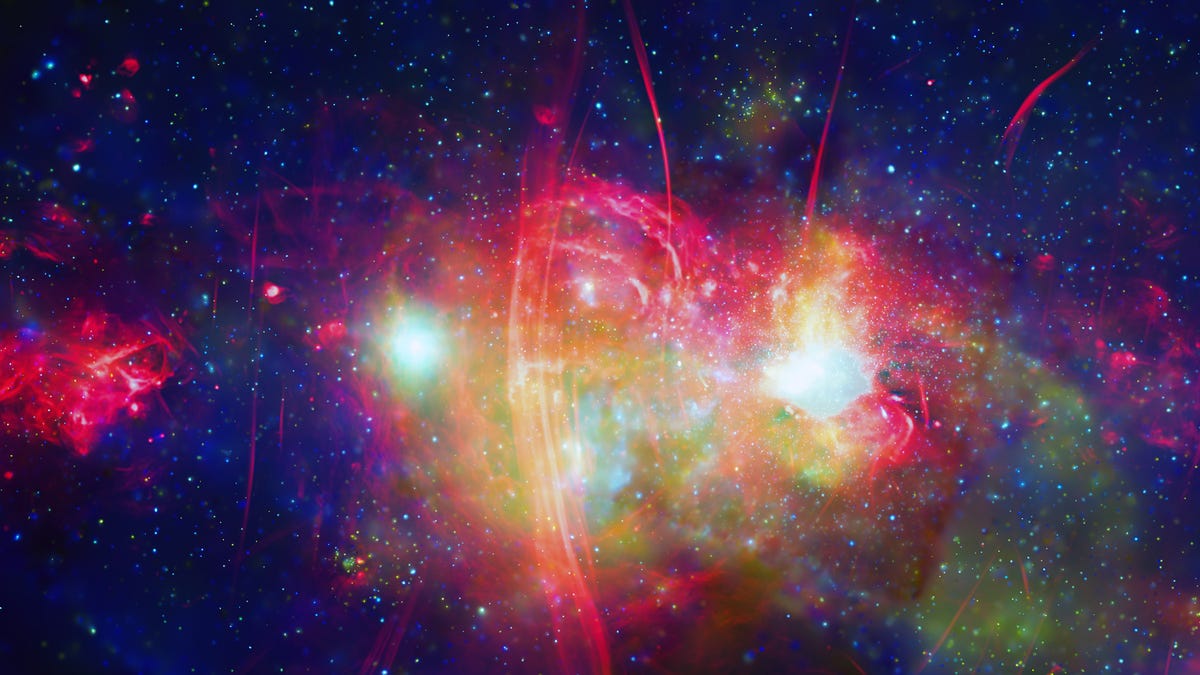Astronomers search for alien tech among billions of stars but come up empty
It's all quiet in the galactic center.

The center of the Milky Way contains a supermassive black hole and a lot of stars -- but so far, no alien technosignatures
Using one of the world's most sensitive radio telescopes, a trio of Australian researchers has gone alien hunting in the heart of the Milky Way. In late 2020, they pointed their ears toward the galactic center, listening for alien technosignatures. In their field of view lay 144 known exoplanets and, potentially, billions of stars.
But after keeping their ears to the sky for more than seven hours, they didn't hear anything plausibly alien. It seems awfully quiet out there.
The search was conducted by the Murchison Widefield Array, a collection of 4,096 spider-like antennas planted in the Western Australian desert. The antennas, arranged in 256 tiles, can pick up low-frequency radio waves from space. Importantly, the array has a wide field of view, which means researchers can listen out for technosignatures -- signals broadcast by intelligent life -- across a huge region of space. "We are looking for long sustained signals or technological leakages from the inhabitants daily lives," says Chenoa Tremblay, a researcher with the SETI Institute in California.
The search is described in a new paper, which appeared Monday on preprint repository arXiv (PDF) and has been accepted for publication in the journal Publications of the Astronomical Society of Australia.
This isn't the first time the team has used MWA to hunt for alien signals, either. They previously examined the dark forest of our cosmos back in 2020 using the MWA, analyzing over 10 million stars, studied the galactic center back in 2013 and performed a search toward the Orion nebula in 2018. They didn't hear boo from any aliens in those three surveys, either.
However, the new search is different in a few keys ways, according to Tremblay, who is also first author of the new study. The previous search of the galactic center, in 2013, only contained 38 known exoplanets whereas the new search contained 144. "This is our largest population of known exoplanets within our four surveys with the MWA," Tremblay says.
Hunting for life around the galactic center is particularly useful because the region contains the highest density of stars within our galaxy. Where there are stars, there may be planets and where they are planets... well, you get the drift. "[M]odelling and our large catalogue of known solar systems suggest that there are high chances of habitable planets toward the Galactic centre," Tremblay notes.
The spider-like antennas of the Murchison Widefield Array.
The amount of stars in the new search is difficult to accurately predict because the galactic center is mighty dusty, obscuring the view of surveys and preventing an accurate read. Previous searches have used data from the Gaia Space Observatory to count the amount of stars but that doesn't work in the galactic center. Tremblay explains that the team used a different survey, known as Galactic Nucleus, which classified 3.3 million stars. However, the survey covers less than 1% of the area surveyed by MWA.
"If we extrapolate this, we are covering billions of stellar systems out to the centre of our Galaxy," Tremblay notes.
That's, in theory, a lot of chances to hear from extraterrestrial friends. However, it's still just a mere drop in the cosmic ocean -- there's plenty of other places alien technosignatures could be emanating from.
It was also the first time a search has been conducted at a high frequency of 155 MHz. This reduced the chance of picking up daily Earth communications and interference. Previous searches focused on lower frequencies between 98 and 133MHz. Of course, that comes with a big caveat: We're kind of assuming these alien technologies are using the same technologies to broadcast as we are.
The MWA is currently undergoing an upgrade that will allow searches at different frequencies and time resolution, giving it the ability to match other searches for technosignatures like those conducted by the Breakthrough Listen collective. Tremblay notes that all 256 of the tiles containing the spider-like antennas will be able to image the sky when the upgrades are complete.

